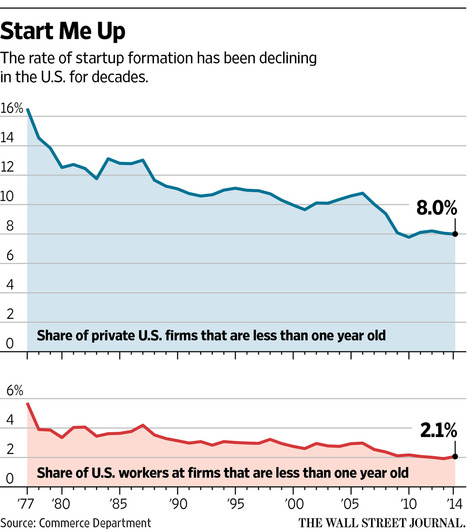(p. B6) . . . , it’s possible to create a huge tech company without taking venture capital, and without spending far beyond your means. It’s possible, in other words, to start a tech company that runs more like a normal business than a debt-fueled rocket ship careening out of control. Believe it or not, start-ups don’t even have to be headquartered in San Francisco or Silicon Valley.
There is perhaps no better example of this other way than MailChimp, a 16-year-old Atlanta-based company that makes marketing software for small businesses. If you’ve heard of MailChimp, it’s either because you are one of its 12 million customers or because you were hooked on “Serial,” the blockbuster true-crime podcast that MailChimp sponsored.
Under the radar, slowly and steadily, and without ever taking a dime in outside funding or spending more than it earned, MailChimp has been building a behemoth. According to Ben Chestnut, MailChimp’s co-founder and chief executive, the company recorded $280 million in revenue in 2015 and is on track to top $400 million in 2016. MailChimp has always been profitable, Mr. Chestnut said, though he declined to divulge exact margins. The company — which has repeatedly turned down overtures from venture capitalists and is wholly owned by Mr. Chestnut and his co-founder, Dan Kurzius — now employs about 550 people, and by next year it will be close to 700.
As a private company, MailChimp has long kept its business metrics secret, but Mr. Chestnut wants to publicize its numbers now to show the road less traveled: If you want to run a successful tech company, you don’t have to follow the path of “Silicon Valley.” You can simply start a business, run it to serve your customers, and forget about outside investors and growth at any cost.
. . .
“Every time we sat down with potential investors, they never seemed to understand small business,” Mr. Chestnut said. Venture capitalists always wanted MailChimp to serve “enterprise companies,” large businesses with thousands of employees and, potentially, thousands to spend.
“Everybody we talked to said, ‘You’re sitting on a gold mine, and if you pivot to enterprise, you could be huge,'” Mr. Chestnut said. “But something in our gut always said that didn’t feel right.”
For the full story, see:
Farhad Manjoo. “STATE OF THE ART; A Road Less Traveled to Success as a Start-Up.” The New York Times (Thurs., Oct. 6, 2016): B1 & B6.
(Note: ellipses added.)
(Note: the online version of the story has the date Oct. 5, 2016, and has the title “STATE OF THE ART; MailChimp and the Un-Silicon Valley Way to Make It as a Start-Up.”)


